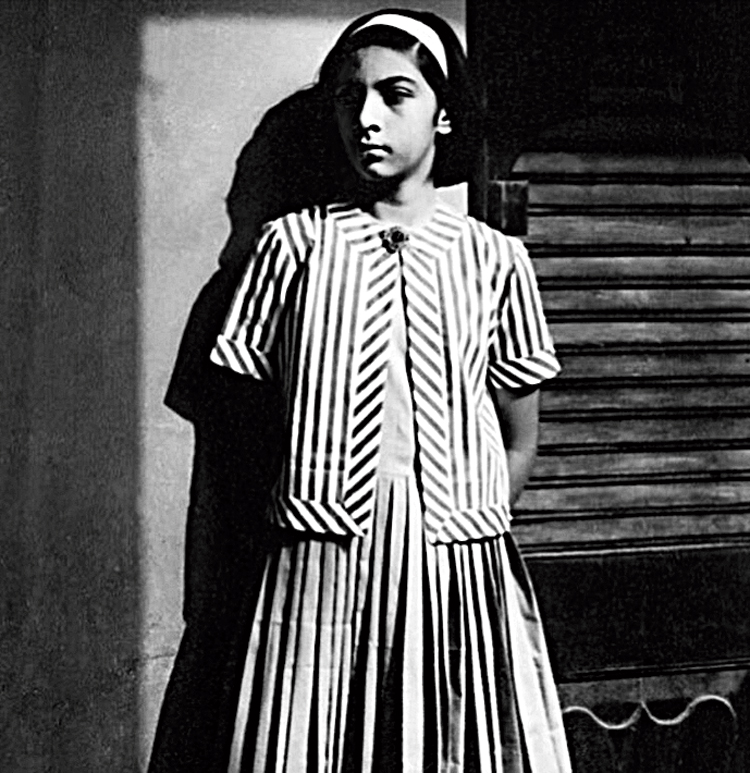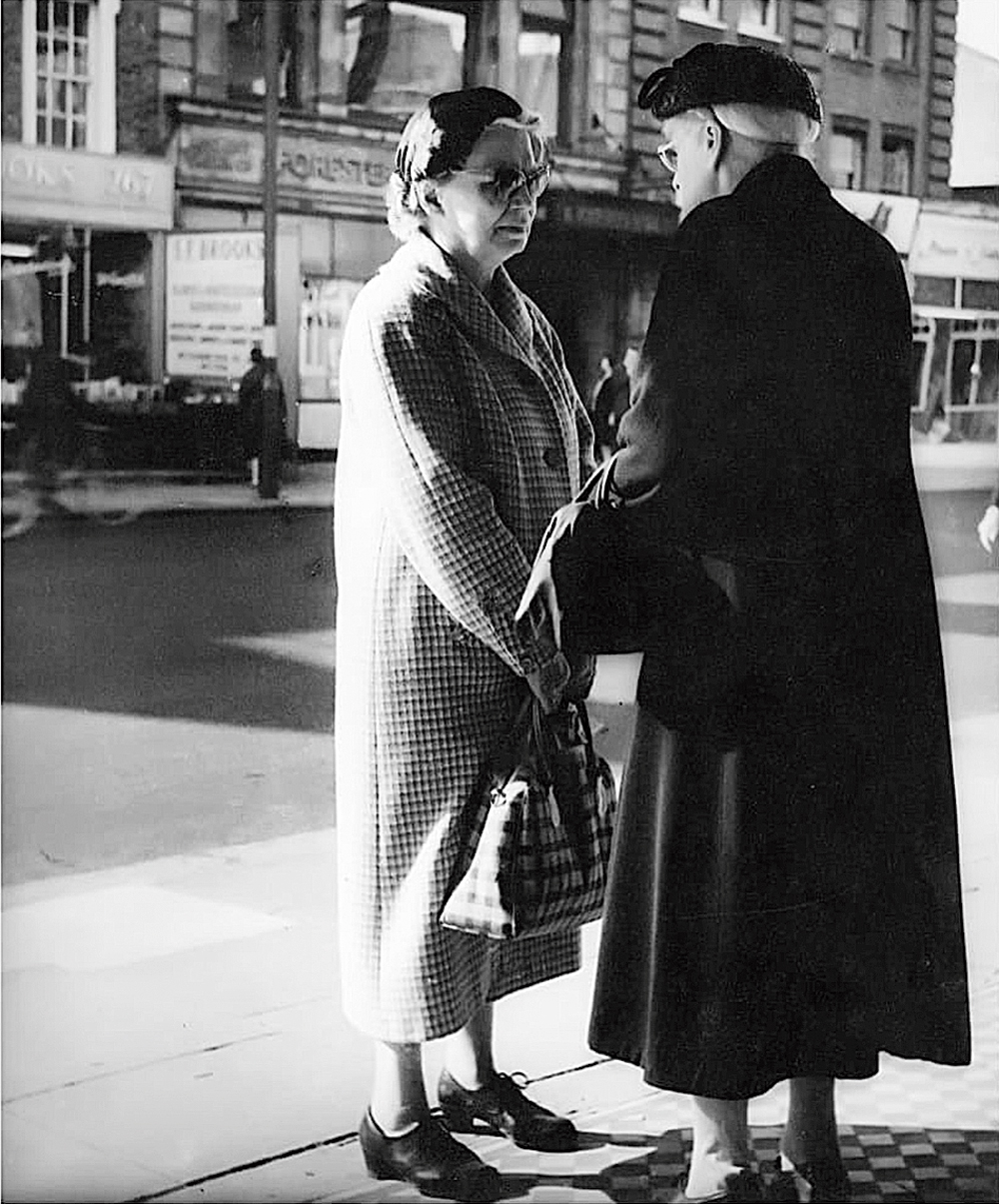Manobina Roy, wife of celebrated filmmaker Bimal Roy, would have been 100 this year and, quite by luck, her son, Joy, succeeded in exhibiting a marvellous selection of photographs shot by her, in her centenary year.
This was something that had been in the pipeline for 18 years, ever since Joy found his mother sitting quietly in a corner during a display of his father’s still photography in 2000. “No one has ever done this for me,” she cried when Joy asked her what was wrong. At that moment, a guilt-stricken Joy decided he would do justice to his mother’s body of work as well.
Unfortunately, Manobina Roy passed away in 2001. Thereafter, each time Joy came close to holding an exhibition of her photographs something went wrong, and the years went by.
Then, in 2018, at a retrospective of his father’s films, Joy happened to meet M.C. Mohan, a Hyderabad-based art historian. Without quite knowing why, Joy spoke to him about his mother’s work instead of his father’s. On hearing about Joy’s aborted attempts to give his mother her due, Mohan offered to curate Manobina Roy’s photographs and facilitate an exhibition in his city. Things moved quickly after that… and one of the earliest women photographers of the country finally got recognition, with not one but two exhibitions of her meticulously-crafted images, in Hyderabad and Mumbai.
Born in November 1919, in Ramnagar, Benaras, on the banks of the Ganges, together with her twin sister, Debolina, Manobina had an unusual upbringing for those times. Her father was an academic and he ensured his daughters got an all-round education, taking them with him to royal durbars and mujras alike. On their twelfth birthday, he gifted the twins Brownie cameras.
These were not meant to be mere toys but a means by which the two girls would follow in their father Binode Bihari Sen Roy’s footsteps. A member of the Royal Photographic Society of Britain, Sen Roy wanted to pass on this legacy to his two daughters.

A portrait of filmmaker Bimal Roy clicked by Manobina Picture: Sanjay Marathe
Joy describes the process by which his grandfather ensured the two girls evolved into skilled photographers: “To further their understanding of the craft, dadu set up a makeshift darkroom so they could learn how to develop the pictures they clicked. While still in their teens, they became members of the United Provinces Postal Portfolio Circle, whose members exchanged photographs by post which would then be exhibited in cities other than their own. My mother and maashi’s pictures got published in some journals as well, with awards at photo competitions coming along as a bonus.” The process started by Sen Roy came a full circle, this year, with the Hyderabad and Mumbai exhibitions. The two sisters and their father would have been happy.
As I climb the stairs to Artisans’ Art Gallery in Mumbai, I know I have a nostalgia-soaked afternoon ahead of me. Photographs lining the walls of the staircase hark back to times left behind decades ago. A serious, young girl in a pleated dress and candy-striped blouse transports me to fashions of my childhood, while a tramp in London rewinds stories one has heard of the hard times in the city after World War II.
Entering the lily-perfumed gallery, my eye catches more images of London in the 1950s. Two elderly women pausing for a chat, a shapely, young lass in stilettos and a knee-length, gathered skirt juxtaposed against stately buildings that have escaped the ravages of war, a roadside newspaper vendor, a mother taking her baby for a stroll in a pram... My favourite is the one of a silver-haired, softly-wrinkled lady engrossed in a book by Monica Dickens, her ageing fingers holding the book tenderly.
Londoners were picking up the threads of their life again, and women, no longer prissy, were enticed by shop windows. Manobina’s camera captured the mood of post-rationing years perfectly! Her pictures of ladies in chintz skirts walking past the mannequins of Oxford Street are a fascinating contrast to the Oxford Street of this century. One of the shops was simply called Modern Ladies!

A photo by Manobina
If Manobina’s documenting of London street life is fascinating, her compositions of domestic life in Godiwala Bungalow on Mumbai’s Mount Mary Road, in the then quiet suburb of Bandra, are equally interesting. The Roys moved into this bungalow in 1954 and a large part of Manobina’s collection of photos was shot here, inspired by the way the rays of the sun fell on its verandah. Located on a small hill, facing the Arabian Sea, Godiwala Bungalow saw Manobina’s talents blossom in a precise manner.
Often using her children as models, Manobina played with light and shade, knowing exactly how the light fell on the verandah at different times of the day. “These were no impromptu pictures of us,” recalls Joy. “She placed us in the frame when she got the exact moment of the day she wanted.” Quite like her husband who drove his cameraman crazy, waiting for leaves to dance in the natural breeze!
In contrast to present-day mobile phone-addicted children, the Roy kids are caught on camera reading, painting, playing with cats and dogs, or just lost in thought! With their shadows stretching beyond them, the little ones acquire a significance way beyond their years.

A photo by Manobina
While Manobina’s forte may have been her technical genius in exploiting natural light, she also had an instinctive talent for capturing moods in a nuanced manner. From Pandit Nehru’s smile of patient resignation to the regal self-assurance on Vijaylakshmi Pandit’s face, and her husband, Bimal Roy’s faraway look, cigarette in hand, Manobina froze telling expressions in her compositions. Her portrait of a mellow Rabindranath Tagore, with more than a hint of sadness in his eyes during his autumn years, was considered by The Illustrated Weekly of India to be one of the 25 best images of the poet.

A photo by Manobina
Portraits, street life, landscapes… Manobina’s camera (the Brownie was followed by a Rolleiflex, an Asahi Pentax and a Nikon) caught beauty in various forms in natural light, without the help of modern-day digital gadgets.
Skill, honed from the tender age of 12, a sharp eye and a finely-tuned sensibility combined to produce black-and-white art works that have archival value today. Being the wife of a famous, supremely-talented filmmaker had its advantages and disadvantages. While the couple may have learnt much from each other, Manobina got overshadowed by her husband’s enormous reputation.
So, the exhibitions, jointly put together by her son and M.C. Mohan, have finally brought her out of the shadows.











